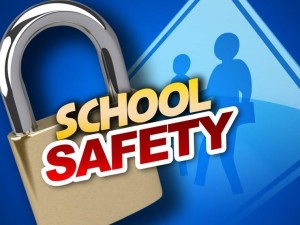Whitepaper Presents Real-World Examples and Recommendations
by Dr. William M. Toms of Fairleigh Dickinson University and Beth Clay of Mutualink, Inc.
View the entire newsletter for more articles: 2015 - NJAC County Biz - June
 The problem of school safety and security needs to be addressed through strategic collaboration, according to a new whitepaper authored by Dr. William M. Toms, a faculty member at Fairleigh Dickinson University and retired New Jersey State Police Major, in collaboration with Mutualink, a company specializing in interoperable communications for schools, public safety, defense, and more.
The problem of school safety and security needs to be addressed through strategic collaboration, according to a new whitepaper authored by Dr. William M. Toms, a faculty member at Fairleigh Dickinson University and retired New Jersey State Police Major, in collaboration with Mutualink, a company specializing in interoperable communications for schools, public safety, defense, and more.
“Ensuring Preparedness during School Safety Crises” is a valuable resource for school administrators, school security personnel, policy makers, public safety agencies, and other stakeholders with a role in protecting students while at school.
The model of local school district autonomy has a proud and storied past in our nation. Communities and regional school districts need to follow various federal and state standards. However, these communities and school districts operate autonomously, and often times distinctly differently than another school located just down the street. From community to community, funding for schools varies tremendously across geographic regions.
This disparity in funding and home rule oversight of schools, in addition to possibly many other factors, has widely impacted the assessment of desired academic outcomes for student success. This cannot be the same ends that we seek for securing our schools. Statewide funding mechanisms are needed to ensure schools have sufficient budgets and safety and security expertise when planning to protect our children.
Likewise, there is a call for enhanced cooperation and communication among all stakeholders to address the complex problem of school security. In addition to community partners and first responders, private sector entities like Mutualink can serve as important strategic partners for school districts with regard to safety and security. The company specializes in interoperable multimedia communications and has extensive experience delivering collaboration solutions to law enforcement, the military, hospitals, and of course, schools.
Strategic collaboration between school administrators and public safety agencies will result in reduced response and resolution time in the event of an emergency. In real-word exercises, Mutualink’s technology has been shown to reduce incident resolution time by as much as 40% in active shooter drills.
New York is a successful example of strategic collaboration with statewide and local officials. The State of New York has implemented a pilot program in 20 schools in two counties, intended to link to police and other entities in the event of an emergency. Mutualink’s technology creates a network of connected communities, which improves situational awareness and response time while protecting privacy and minimizing costs. By partnering with experts such as Mutualink, school administrators can focus on educating, knowing that advanced technology is helping to achieve unprecedented communication and collaboration to protect their students.
The paper also offers experience-based insights into preventing, operationalizing, and mitigating school-related emergencies.
“For schools to provide an optimal setting for learning and growth, they must not only be safe, but provide a feeling of security to all stakeholders – faculty, students, parents, board members and community supporters,” according to Dr. Toms.
